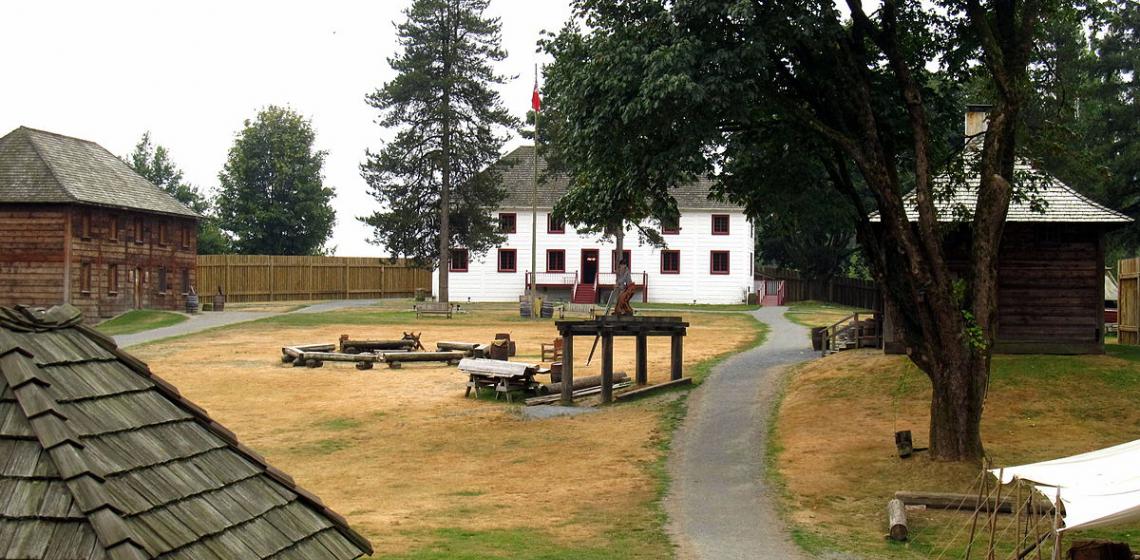
Fort Langley National Historic Site is a former trading post of the Hudson's Bay Company. Founded in 1827, it was well frequented over the years 1856-1886. This was due to its strategic location on the northern boundary of the Oregon Territory of the U.S. and in the path of the Fraser Canyon Gold Rush. It played a key role in the establishment of the 49th parallel as the international boundary with the U.S. In 1886, Fort Langley ceased to be a company post.
In 1923, the Canadian government designated Fort Langley as a National Historic Site. At this time, the site consisted only of the one original building, the storehouse, and 1-acre of land. From 1931 to 1956, the Native Sons and Daughters of British Columbia operated a museum out of the storehouse. Parks Canada took control of the site in 1955, and a joint Federal-Provincial program reconstructed three buildings in time for the centennial of the founding of British Columbia in 1958. In 1978, the site became a national historic park, and has consisted of 8.5 hectares (21 acres) since 1985.
The storehouse is the oldest building at Fort Langley, and possibly the oldest in British Columbia. It was rebuilt in the 1840s after a fire which destroyed a similar building in 1839, and was the only building which survived the demise of the Fort as an active trading post.
The servants' quarters were reconstructed in 1958 for the Centennial of the Colony of British Columbia, and portrays the living conditions of three different HBC employees. The building was used to display barrel-making until 1992 when the new cooperage was built.
The Big House was also reconstructed for the 1958 Centennial, and is quite consistent with the original in terms of appearance and location within the Fort. It houses the living quarters of James Murray Yale and his wife; and William Henry Newton and his wife, Emmaline (Tod) Newton
The northeast bastion was rebuilt in 1958, while the north west bastion has only been added more recently. There was originally a third bastion along the west palisade wall.
The Depot was reconstructed in 1997 and is mainly used as an exhibition area and administration building. The original building would have been used as a supply depot for shipments in and out of the Fort.
The cooperage was built in 1992, slightly south of the original, and features all the required tools for barrel making and other woodworking.
The exhibits building, built in 2001, houses a display on the international trade done by the Hudson's Bay Company. The original building would have been a storehouse.
The blacksmith shop was first built in 1973, and then rebuilt in 1975. It features a working forge and live demonstrations of blacksmithing.
Text source: Wikipedia
Image By Mwoodbc - Own work, CC BY-SA 3.0, https://commons.wikimedia.org/w/index.php?curid=21612193
